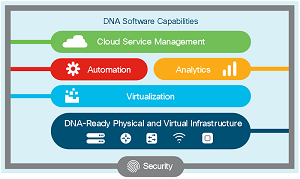News
Cisco Says SDN-Powered 'Intent-Based Networking' Is Industry Future
Analyst says it brings SDN to enterprise networking.
Cisco Systems Inc. -- the unchallenged kingpin of networking hardware for the past 30 years -- this week said it was shifting from hardware-centric to software-driven networking.
The company unveiled what it calls the "network of the future" in the form of a new initiative deemed "intent-based networking," based on many tenets associated with the emerging software-defined networking (SDN) approach. One analyst said the move effectively brings SDN to enterprise networking.
"With this new approach, Cisco is changing the fundamental blueprint for networking with reimagined hardware and the most advanced software," the company said. "This shift from hardware-centric to software-driven networking will enable customers to experience a quantum leap in agility, productivity and performance."
Cisco said its new "intuitive network" was powered by three factors:
- Intent: Intent-based networking allows IT to move from tedious traditional processes to automating intent, making it possible to manage millions of devices in minutes -- a crucial development to help organizations navigate today's ever expanding technology landscape.
- Context: Interpreting data in context is what enables the network to provide new insights. It's not just the data that's important, it's the context that surrounds it -- the who, what, when, where and how. The intuitive network interprets all of this, resulting in better security, more customized experiences and faster operations.
- Intuition: The new network provides machine-learning at scale. Cisco is using the vast data that flows through its networks around the world, with machine learning built in, and unleashing that data to provide actionable, predictive insights.
The new initiative involves the introduction of several technologies associated with the company's Digital Network Architecture (DNA), including what it calls Software-Defined Access (SD-Access).
 [Click on image for larger view.] Cisco DNA (source: Cisco).
[Click on image for larger view.] Cisco DNA (source: Cisco).
"SD-Access uses automated policy enforcement and network segmentation over a single network fabric to dramatically simplify network access for users, devices and things," Cisco said.
Other technologies include: DNA Center, a management dashboard; a new DevNet DNA Developer Center; a new family of switches called Catalyst 9000; encrypted traffic analytics; and several more.
In addition to Cisco referring to intent-based networking as the "network of the future" in a news release, a Cisco exec elsewhere referred to it as the company's "biggest innovation in the past decade," another exec said it will "change the trajectory of the entire industry" and yet another exec said it was "a quantum leap in the evolution" of Cisco DNA.
Cisco didn't use the term SDN in a news release or related blog posts, but SDxCentral quoted IDC analyst Rohit Mehra as saying intent-based networking brings SDN to the enterprise level.
"Although Cisco didn't talk much about SDN, they did talk about software-defined access security and automation, policy and automation, the issue of machine learning and how their security platform actually enables and empowers the network in real time," Mehra said in the SDxCentral article. "While Cisco may not have said it, we are now embarking on this new era of SDN for the enterprise network. That's what Cisco is bringing to the table."
Despite the company's acknowledgement of a shift from a hardware focus to an emphasis on software, CEO Chuck Robbins wasn't quite ready to admit Cisco was becoming a software company.
"Many are saying we're becoming a software company, but the reality is that hardware, software, and services are all critical to our future -- and to providing our customers with the right foundation for their digital businesses," Robbins said in a blog post. "While we are announcing how we will make this shift in our core business, enterprise networking, today's news also marks the beginning of a top-to-bottom commitment to intent-based infrastructure."
About the Author
David Ramel is an editor and writer at Converge 360.